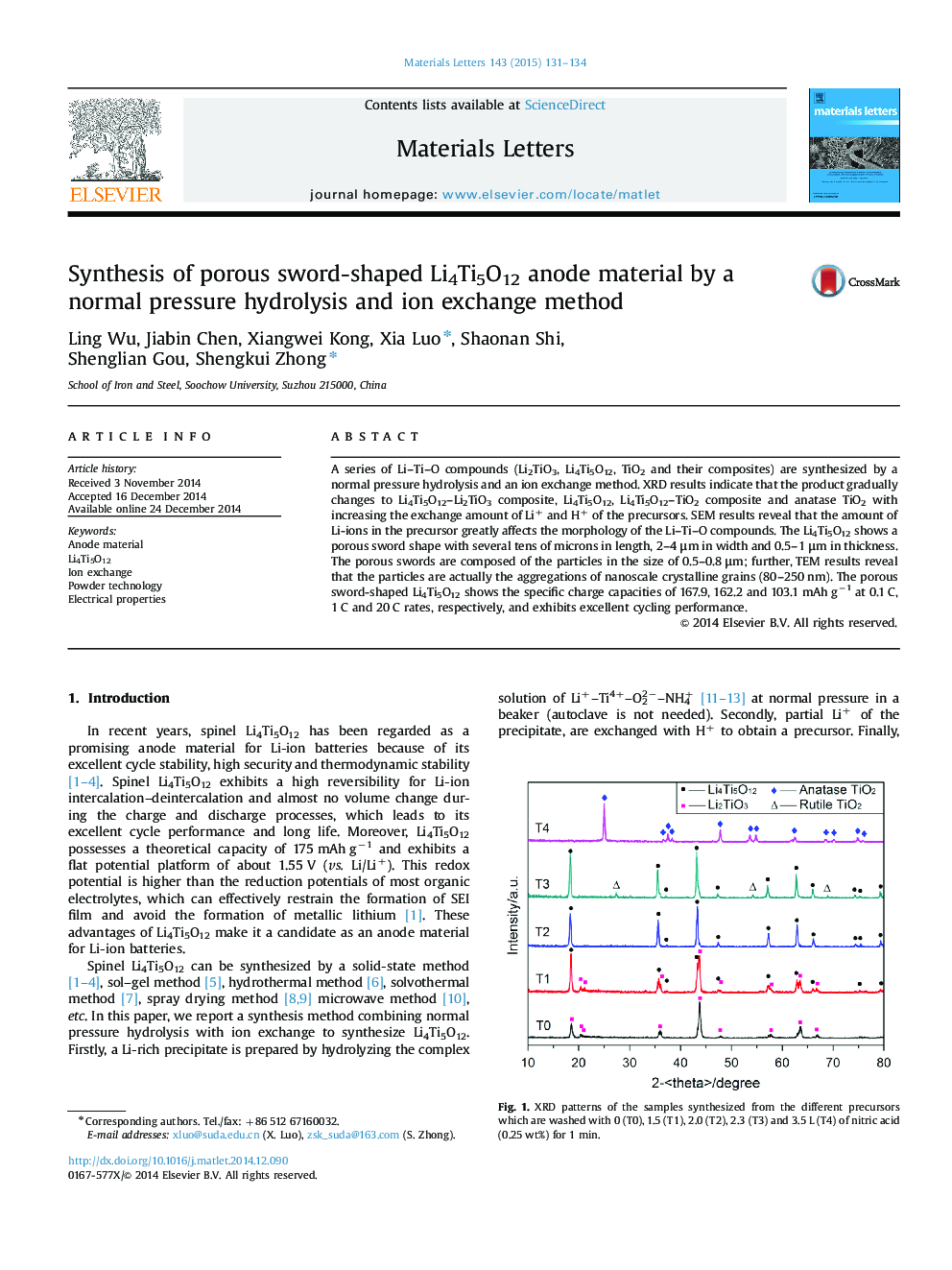| Article ID | Journal | Published Year | Pages | File Type |
|---|---|---|---|---|
| 1642765 | Materials Letters | 2015 | 4 Pages |
•Li4Ti5O12 is synthesized by a normal pressure hydrolysis and ion exchange method.•Li4Ti5O12–Li2TiO3, Li4Ti5O12–TiO2 and TiO2 can also be prepared by this method.•The type of product can be controlled by the exchange amount of Li+ and H+ ions.•Li4Ti5O12, Li4Ti5O12–Li2TiO3 and Li4Ti5O12–TiO2 show the porous sword-shape.•Li4Ti5O12 shows excellent rate capability and cycling performance.
AbstactA series of Li–Ti–O compounds (Li2TiO3, Li4Ti5O12, TiO2 and their composites) are synthesized by a normal pressure hydrolysis and an ion exchange method. XRD results indicate that the product gradually changes to Li4Ti5O12–Li2TiO3 composite, Li4Ti5O12, Li4Ti5O12–TiO2 composite and anatase TiO2 with increasing the exchange amount of Li+ and H+ of the precursors. SEM results reveal that the amount of Li-ions in the precursor greatly affects the morphology of the Li–Ti–O compounds. The Li4Ti5O12 shows a porous sword shape with several tens of microns in length, 2–4 μm in width and 0.5–1 μm in thickness. The porous swords are composed of the particles in the size of 0.5–0.8 μm; further, TEM results reveal that the particles are actually the aggregations of nanoscale crystalline grains (80–250 nm). The porous sword-shaped Li4Ti5O12 shows the specific charge capacities of 167.9, 162.2 and 103.1 mAh g−1 at 0.1 C, 1 C and 20 C rates, respectively, and exhibits excellent cycling performance.
Graphical abstractFigure optionsDownload full-size imageDownload as PowerPoint slide
